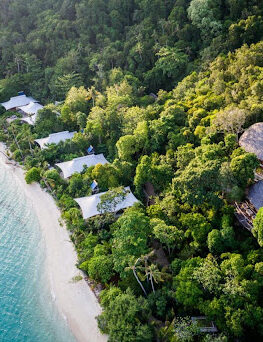Published on June 12, 2014
Entering its 5th stage, the race among cyclists in the Tour de Singkarak 2014 was getting tighter by the day. The Stage started from the Payakumbuh Municipal Building with its finish line at the grand Lake Singkarak in the Solok Regency.
Athletes were presented with a relatively flat track featuring two sprint points which are at Payakumbuh (Km17.5) and the Sukarno-Hatta Street at Batusangkar (Km 69.5). Considered ideal for those with sprint specialties, the track differed from previous stages that were dominated by ascending tracks and King of Mountain spots.
Today Spanish cyclist Oscar Pujol Munoz, managed to break the Iranian domination in this stage and was the first to cross the finish line making the time of 2 hour 23 minute and 42 second. Indonesia’s national Team rider, Hari Fitrianto, managed to take 2nd place, followed by 7 Eleven Road Bike Team’s rider from the Philippines, Nohales Nieto in 3rd place.
The victory saw the sweet comeback of the Champion in Tour de Singkarak 2012 after having been continuously beaten by Iranian riders in the earlier stages that were mainly dominated by climbing tracks. Although emerging as the fastest in the 5th Stage, Pujol’s position in the general standings did, however, not improve much. The Spanish rider still sits on the 8th place with the accumulative time of 14 hour 51 minute and 33 second. Nonetheless, with the latest victory, Pujol still has plenty of opportunities to gather more points and climb to the top of the leaderboard.
Up to this point, the general standings are still dominated by racers from Iran. The top spot still belongs to Amir Zargari from the Pishgaman Yazd Team, while his teammate Rahim Emami remains on second place followed by Hossein Alizadeh in third place.
In the South East Asia category, Dadi Suryadi from the Pegasus Continental Team firmly holds the top spot while Indonesia’s national Team’s cyclist Bambang Suryadi came in second place followed by Ryan Boots Cayubit from 7 Eleven of the Philippines Team placed 3rd.
As the main icon of the international competition, Lake Singkarak covering a total area of 129,7 square kilometers is the second largest lake in Indonesia after Lake Toba in North Sumatra.
The lake offers its own mystical beauty and tranquil ambience. This is also the perfect place for paragliding, parasailing, canoeing, and fishing.
In 1905, the beauty of Lake Singkarak captured the attention of naturalist Ernst Haeckel who illustrated its beauty in a Biology book. Ernst Haeckel was so captivated with the panoramic view of the lake, which he later captured in a beautiful painting.
There are over 19 species of fish living in the waters of Lake Singkarak. One particular species Is a special feature of the lake, known as Bilih fish (Mystacoleucus padangensis). This fish is endemic to Lake Singkarak and makes a delicious crunchy treat distinct to Lake Singkarak. Of relatively small size, the fish is usually deep fried and served with Minang’s distinct chili sauce.
Lake Singkarak is located 70 km from Padang, capital of the province of West Sumatra, 20 km from Solok and about 36 km from Bukittinggi.
From the Minangkabau international airport, you can take a rental car or a public minibus plying the Padang-Solok route and then continue on another public transport to the lake. This journey will take you pass the Sitinjau Laut area which is famous for its sharp curves and steep valleys.






